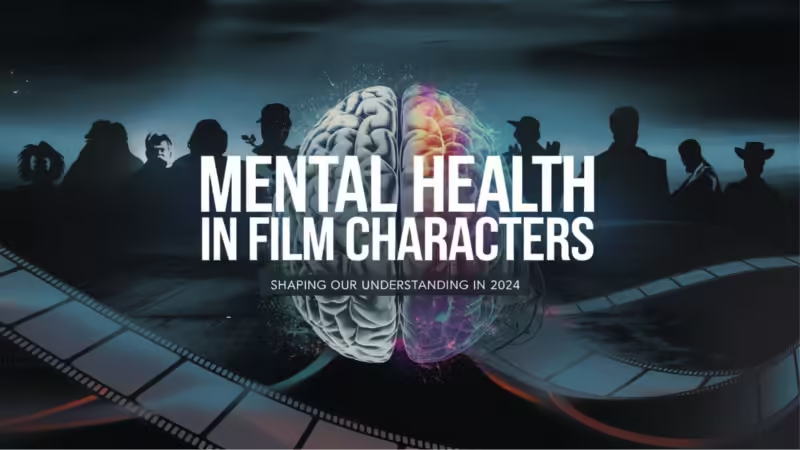Mental health movies have a profound impact on how society views mental illness. As more films address these issues, they help raise awareness and reduce stigma. Over time, the portrayal of mental health in cinema has evolved significantly. This shift has changed how audiences understand and empathize with mental health challenges.
Early Stereotypes and Negative Portrayals
Initially, mental health films often relied on harmful stereotypes. Characters with mental illness were shown as dangerous or unstable. For instance, Psycho (1960) linked mental illness with violence, reinforcing negative perceptions. These portrayals created fear and deepened misunderstandings.
At that time, movies did not explore the complexity of mental health. Instead, they simplified the issue, contributing to isolation and stigma. As a result, these films often failed to humanize those living with mental illness. To learn more about the history of mental health in films, visit Films and Minds.
A Shift Towards Empathy and Realism
However, over time, movies began to change. Films like One Flew Over the Cuckoo’s Nest (1975) and A Beautiful Mind (2001) marked a turning point. One Flew Over the Cuckoo’s Nest critiqued the treatment of mental health patients. Meanwhile, A Beautiful Mind explored the personal struggles of living with schizophrenia.
These films helped audiences see mental illness with more compassion. By focusing on the individual’s experience, they moved away from fear-based portrayals. They encouraged viewers to empathize and understand rather than judge.
Modern Portrayals of Mental Health in Film
Today, movies addressing these topics are more common and nuanced. Many modern films explore issues like depression, anxiety, and PTSD. For example, Silver Linings Playbook (2012) tells the story of a man with bipolar disorder, emphasizing the importance of community and support in healing.
On the other hand, Joker (2019) highlights the consequences of neglecting mental health. It sparked discussions about how society treats those with mental illness. These films encourage important conversations while promoting awareness.
For more insights into mental health themes in cinema, check out Films and Minds.
Documentary Films and Real-Life Stories
Documentaries have also made a significant impact by focusing on real-life mental health experiences. Films like The Devil and Daniel Johnston (2005) and Won’t You Be My Neighbor? (2018) offer raw insights into mental health challenges. These documentaries give audiences a closer look at the realities of living with mental illness.
By telling real stories, these films humanize the people behind the struggles. They help break down stigma and allow viewers to connect emotionally with the subject matter. For further resources, visit NAMI, which provides valuable information on mental health.
Advocacy Through Mental Health Films
Additionally, these movies have become a key tool for advocacy. Films such as The Perks of Being a Wallflower (2012) and Inside Out (2015) reach younger audiences, making discussions more accessible. These movies encourage open conversations about emotions and mental health, especially among teens and children.
In doing so, they can influence how young people think about and deal with their mental health. They help foster a more open and supportive culture.
Challenges and Responsibilities
However, not all portrayals are perfect. Some films risk romanticizing or oversimplifying complex issues. For example, 13 Reasons Why (2017) faced criticism for its handling of suicide. Critics worried about its potential negative influence on vulnerable viewers.
Therefore, filmmakers must approach these topics carefully. Consulting mental health experts ensures more accurate and responsible portrayals, which are essential for protecting audiences.
For additional insights on the portrayal of mental health in media, consider visiting the World Health Organization.
Conclusion
In conclusion, the impact of mental health movies is undeniable. These films have evolved from reinforcing stigma to promoting understanding and empathy. As filmmakers continue to explore mental health themes, their role in raising awareness and reducing stigma will remain crucial. Through thoughtful storytelling, these films can inspire change and help create a more supportive society.
For more articles and insights on mental health in film, visit Films and Minds.










